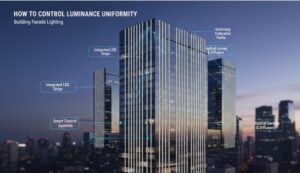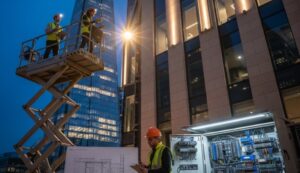When the power goes out or a fire breaks out, having reliable emergency lighting can make all the difference. Safe and reliable lighting is essential at school, an office, a mall, or a restaurant. However, the expansive world of emergency lighting systems can be quite complex, with various categories and seemingly endless regulations.
This article explores the importance of emergency lighting and provides a comprehensive guide to ensure you’re always prepared when the unexpected strikes.
What is Emergency Lighting?
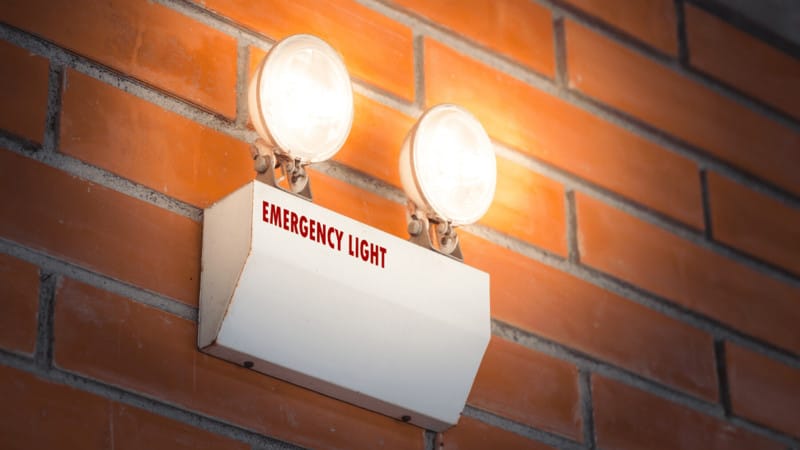
Emergency lighting is a set of luminaries (light fixtures) designed to automatically switch on in cases of sudden power failure inside a building. Alternative terms for emergency lighting include emergency escape lighting, standby lighting, and exit signs.
Emergency lighting is essential for high-population buildings like apartments, malls, cinemas, etc. All public and commercial buildings must provide sufficient lighting for safe and quick evacuations in an emergency.
A basic emergency lighting system must include ambient lights for visibility and properly lit emergency exit direction signs at key locations.
Hotels by lay must have backup safety lights in the hallways and an exit sign at the end of the hallway.
Additionally, larger buildings must have two or more escape routes, and those designated escape routes must be properly indicated through emergency lighting.
Why Do You Need Emergency Lighting?
If you ever wondered, “What’s the big deal with emergency lighting?” You are not alone.
Emergency lighting significantly improves public safety and is rightfully considered a necessary part of modern society. But very few people truly grasp its importance.
So here are three factors why you should install emergency lighting in your buildings.
1. Disaster Risk Assessment
Natural disasters are an unavoidable part of life, and we should plan and prepare ourselves to reduce any potential damage.
Earthquakes, floods, fires, and other threats become deadly when people are trapped inside buildings and unable to escape. Emergency lighting reduces public panic by providing a clear path out of the building.
Studies have shown that investment in an emergency lighting system will eventually have a net positive result on the economy.
2. Building Owner’s Social Responsibility
As a general rule of thumb, a seller must ensure their products are safe and will not harm the buyer. In the case of residential apartments, the owner/manager is the vendor, and the apartment building is the product.
It is the owner’s responsibility to ensure that the building is safe for residents and account for emergency scenarios. All major public buildings in the US, such as supermarkets, hotels, parking lots, etc., must include emergency exit lights.
By the way, you can learn about how to choose a supermarket lighting from our website.
3. Legal Requirement for Public Safety
The judicial system is responsible for enacting and enforcing laws and regulations in the public’s best interest.
Emergency and escape lighting are essential parts of modern architectural design. Non-compliance with these building regulations is considered a violation of the law.
In the best-case scenario, a building owner will face severe fines for non-compliance, and the business will be shut down until proper emergency lighting is installed.
In the worst-case scenario, someone gets hurt during evacuation, and the building lacks proper escape lighting. The owner will be charged as a criminal and be liable for the damages incurred by the residents.
We discuss the different emergency lighting building regulations later in the article.
Types of Emergency Lighting
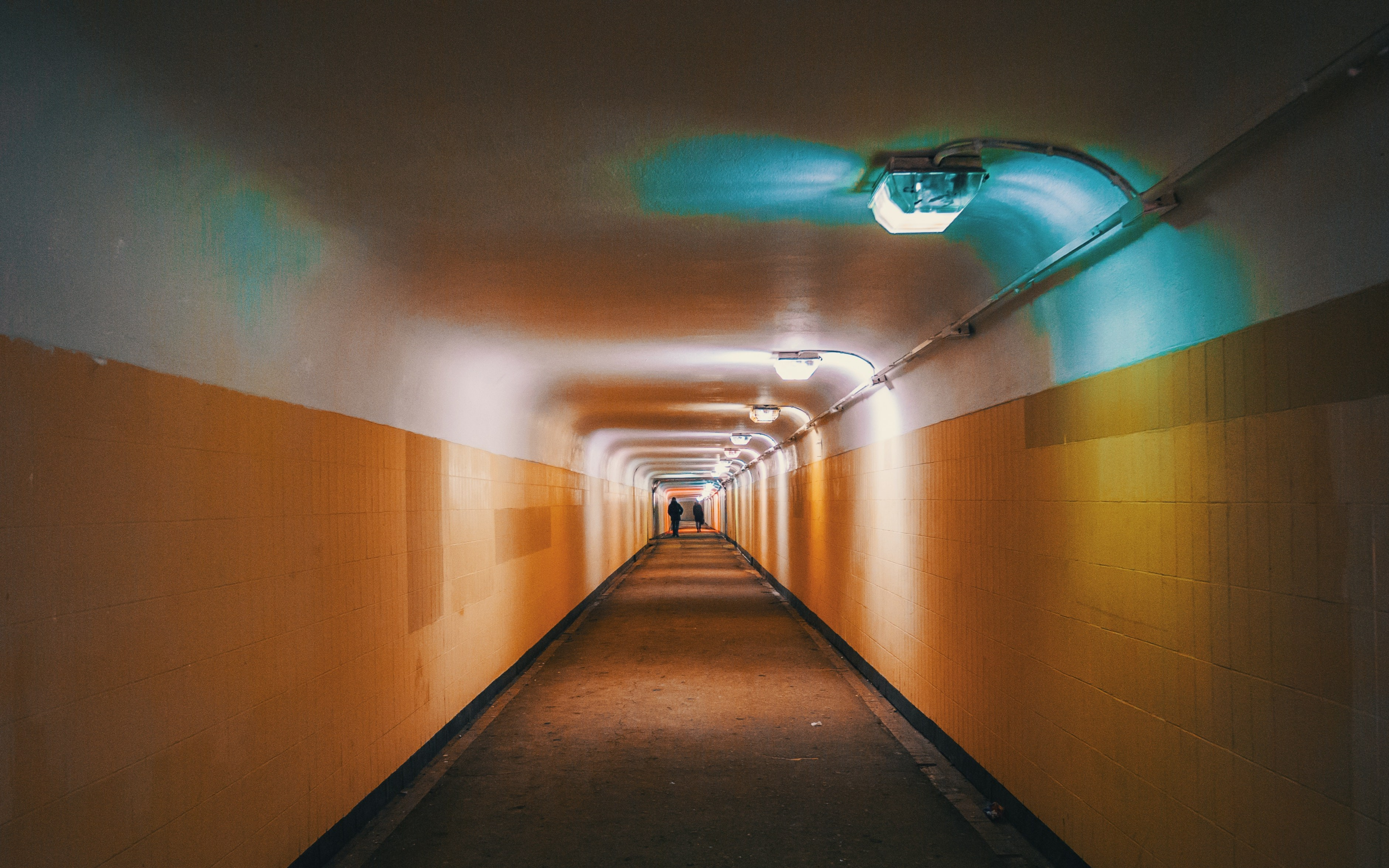
Emergency lighting fixtures are subdivided into various categories based on design, features, and applications. This categorization aims to reduce consumer confusion. So you know you’re getting the best lighting fixtures for your building.
Central vs. Independently Powered Emergency Lighting
There are two subtypes of emergency lighting based on the type of backup power supply.
Central Battery
Central battery lighting fixtures are regular lights connected to one powerful backup battery system using special fireproof wiring. The backup power supply immediately occurs when a building experiences a power failure.
Due to their higher power demands, crucial infrastructure buildings like banks and hospitals use large gasoline generators instead of batteries.
Central battery systems are a tried and true means of ensuring public safety. They also provide a convenient way to decrease the operating period for emergency lighting.
You can easily replace the central batter once its charge runs out. Similarly, you can top up the generators with gasoline for continuous operation.
Self-Contained Emergency Lights
Self-contained or all-in-one emergency lighting fixtures are the opposite of central battery systems. Here, each light fixture has a built-in battery pack.
The lighting fixtures switch to internal batteries when the main power supply fails.
Self-contained emergency lighting is way easier to install as it requires no additional wiring. An emergency lighting conversion kit can add batteries to existing light fixtures.
Emergency lighting has significant headroom costs, most associated with costly fireproof and damage-resistant wiring.
Hence, self-contained lighting units are ideal for smaller businesses that cannot afford the cost of a central battery system and for remote buildings that are spread out over a large distance.
However, the maintenance and upkeep of self-contained lighting can be troublesome. Each emergency light must have a fully charged battery and pass regular safety inspections, which can be very time-consuming depending on the number of emergency lights installed in a building.
Batteries degrade over time, and you must replace the internal batters of self-contained lighting units every few years.
Maintained vs. Non-Maintained Emergency Lights
Central and self-contained lighting are differentiated based on their backup power source and maintained, and non-maintained emergency lighting is differentiated based on operational capacity.
Maintained Emergency Lighting
Maintained lighting fixtures operate like regular lights using the main power supply. However, during a power outage, they will shift to backup power and maintain their operations.
Public places like movie theaters, shopping malls, and restaurants typically use a maintained emergency lighting system. In addition to emergency lighting, if you are interested in some restaurant lighting ideas, you can get some ideas from our previous article.
Standard practices require that one out of every five lighting fixtures be maintained as an emergency light to ensure adequate illumination.
Non-Maintained Emergency Lighting
Non-maintained emergency lights are designed to stay dormant during regular building operations and will only turn on once a power failure is detected.
You can find non-maintained emergency lighting in offices and other workplaces.
Unlike its maintained counterpart, non-maintained emergency lighting allows buildings to use two lighting fixtures for a single area. High-power consumption lights can be used for regular operations, and low-power efficient lights can be used for emergencies.
Using secondary low-power units increases the light fixtures’ overall operational time and reduces strain on the backup power system.
Non-maintained emergency lighting has a higher investment cost but provides more versatility in emergencies and doesn’t interfere with your existing lighting design.
Categorizing Emergency Lighting by Application
Next, we can categorize emergency lighting based on its intended application.
Escape Lighting
Escape lighting is designed to lead building occupants to the designated escape route. Most escape lighting includes arrow signs in hallways and central areas pointing to the escape routes and emergency exit signs over doors.
Standby Lighting
Standby lighting is the opposite of escape lighting and is designed to enable normal building operations. Hospitals need standby lighting so medical staff can continue their work uninterrupted.
Open Area & Signage
The open-area lighting is meant to provide adequate illumination with enough intensity so that occupants do not accidentally bump into each other or against furnishings.
Most guidelines suggest open-area lighting for spaces larger than 60 sq.m. This type of lighting is necessary to prevent public panic and aid movement.
Buildings may also use lit-up signs to inform occupants of general safety practices. Some even deploy light-up floor maps for easier navigation.
High-Risk Task Lighting
High-risk task lighting is designed to provide workers with a reasonable level of emergency lighting so that they can perform shutdown procedures before evacuating.
Task lighting should be brighter than general open area emergency lighting so workers can quickly and easily perform their tasks.
High-risk task areas include chemical research facilities, heavy machinery factories, power plants, etc. These areas mandate proper shutdown procedures before evacuation to avoid a bigger disaster.
Emergency Lighting Installation Locations
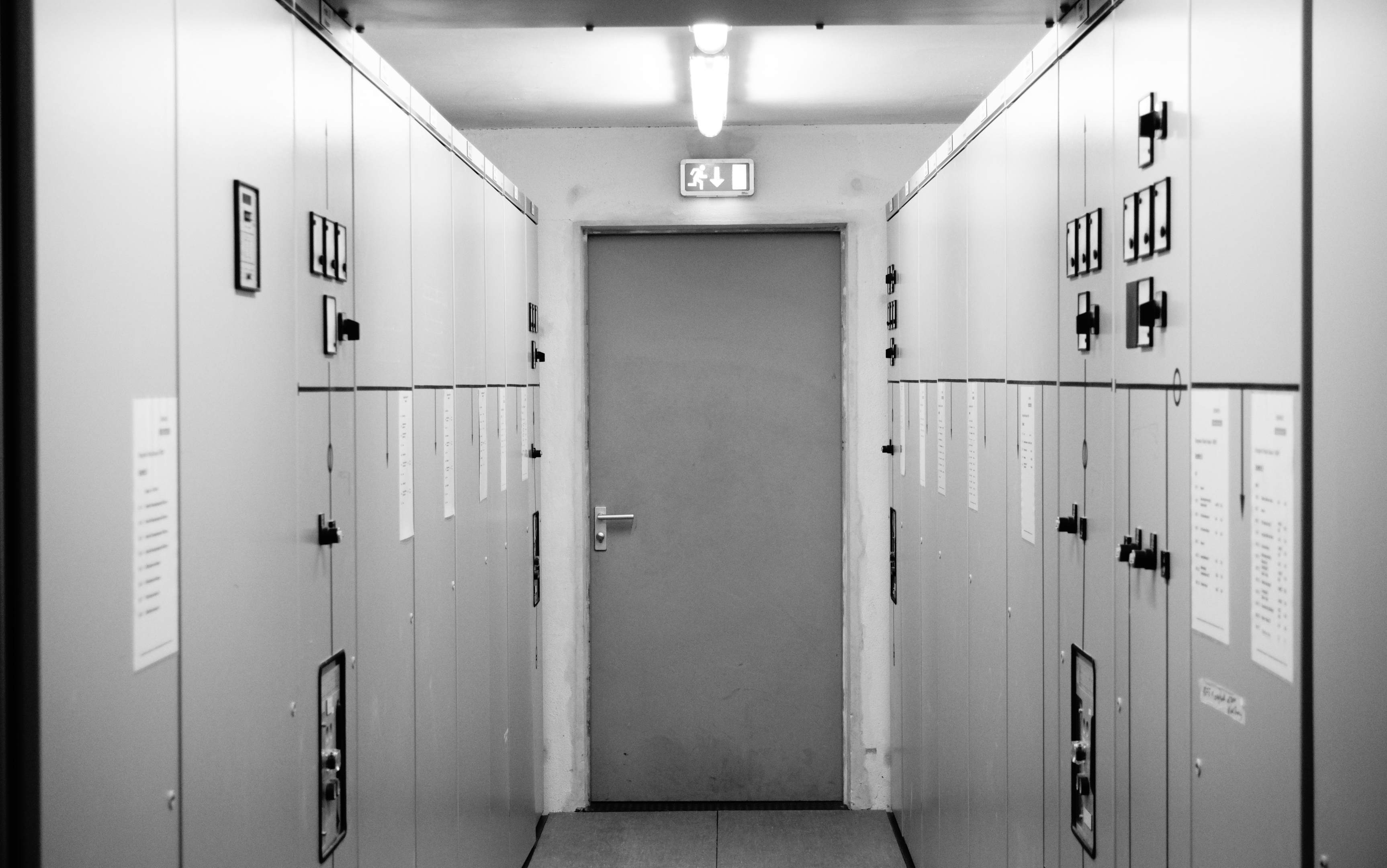
So far, we have discussed the benefits and types of the emergency lighting system. But now, let’s move to the practical side of things.
Although emergency lighting should cover as much floor space as possible, certain locations have been deemed a higher priority. The following is a short list of the most important emergency lighting locations.
1. Staircases
Staircases can be quite hazardous as a simple slip can cause serious damage to the individual and also endanger other building occupants.
2. Points of Floor Change
Points of floor change refer to any significant increase or decrease in the elevation of the floor. Common examples include stairs, ramps, elevators, and slopes.
3. Points of Direction Change
Turns and corners can often lead to people accidentally running into one another. Emergency light fittings should be at key direction change areas for safety and navigation.
4. Corridor Intersections
Intersections can be especially dangerous since panicking occupants often run through them without attention.
5. Near Fire Safety Equipment
We should treat fire safety with the utmost respect. It would be best to have fire fighting equipment conveniently placed at strategic points of the building, covered by proper emergency light fittings.
6.. Near First Aid Post (box)
Emergencies can quickly lead to accidents. Like fire safety equipment, first aid boxes should be conveniently located and properly illuminated by emergency lights.
7. Near Two-way Communication Systems
The importance of communication during an emergency can’t be understated. It helps occupants communicate with building/office managers and helps locate missing/lost individuals.
Intercoms and telephones are key two-way communication devices that should have proper illumination.
8. Facilities for Disabled People
A lack of emergency lighting will have the biggest impact on people with disabilities. We must provide proper emergency illumination to bathrooms used by disabled people and escape equipment designed for them.
9. Near Exit Doors
Without proper emergency signage, people can easily miss an exit point. Thus all emergency lighting systems should have well-lit and well-placed signage near emergency exits.
10. Outside of the Building’s Exit Door
The occupants are out of danger once they leave the building and move far away from it to an open and safe area. Therefore, emergency lights should also be placed outside of the building near the exits. So people can continue moving to safer locations.
Emergency lighting designers must consider all this and more to ensure public safety during emergencies. Additional lighting locations include nearby helpful emergency signage, dangerous equipment, narrow passages, etc.
Emergency Lighting Design
Emergency lighting design is a complex process. Practices that apply to one location will be incompatible with another. You cannot copy someone else’s lighting design since their building’s operation, and yours will vary significantly.
Many countries have health and safety inspection systems that can guide your emergency lighting design. Alternatively, you can hire an emergency lighting expert as a designer to oversee the project.
For those of you with a DIY (do it yourself) attitude. You can check out the following emergency lighting design guide to start.
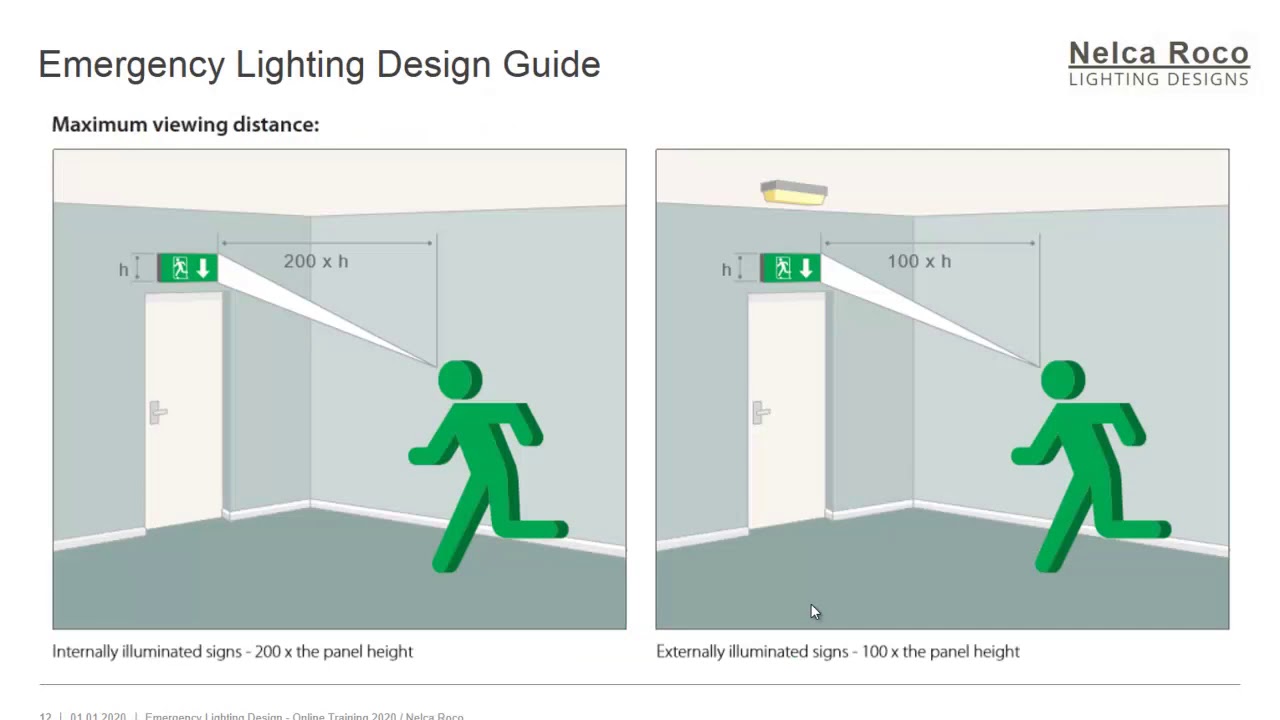
Minimum Lighting Levels (Brightness)
Minimum brightness levels ensure building occupants can easily move out in the event of an emergency power outage. An area’s brightness level is measured in lux.
The lux value of light decreases as you move away from it. So minimum luminance standards are defined to ensure a base value of lux is enforced throughout the area.
| Lighting Location | Minimum Luminance |
| Exit Routes | 1 Lux |
| Large Open Areas | 0.5 Lux |
| High Risk Task Lighting | 15 Lux |
| Exit Signs | 54 Lux |
United States Regulations for Emergency Lighting
The United States does not have a definitive emergency lighting standard. Instead, it has general health and safety guidelines, including emergency lighting regulations.
Organizations like the American National Standards Institute (ANSI) reference various ISO and British lighting standards for lighting applications.
The Occupational Safety and Health Administration (OSHA) is primarily responsible for enforcing workplace safety standards. US businesses follow emergency planning using OSHA’s safety standard 1910.37, which the Department of Labor enforces.
The following are some of the highlights of the OSHA standards.
- Escape (Exit) routes must have enough illumination for a person with normal vision to see them clearly.
- Exit signs should be marked and have the word “EXIT” written on them.
- Exit routes should be clear of any decorations or signage hindering the exit door’s visibility.
- If an exit sign is not close by, a series of signs must be posted to indicate the direction of the exit door.
- The exit sign must have a luminance level of 54 lux.
United Kingdom Regulations for Emergency Lighting
The UK has more robust and clearly defined emergency lighting regulations. English residents can rely on the Regulatory Reform (Fire Safety) Order 2005 and the Building Regulations 2010 Fire Safety for details regarding general safety procedures in an emergency, including proper emergency lighting guidelines.
Highlights of the UK emergency lighting regulations are as follows.
- Emergency and escape lighting is mandatory for all buildings except private residential premises.
- According to BS 5266-1 regulation, buildings will provide adequate escape routes.
- Emergency lighting fixtures should be fitted in key locations as outlined in BS 5266-1.
- Exit sign designs should follow the general standards approved in the BS 5499-4 guidelines.
- An emergency light’s minimum brightness should not exceed 1 lux for rooms and 0.5 lux for open areas.
- All emergency lighting fixtures should be operational for at least three continuous hours.
- Emergency lighting testing should be an annual practice for buildings. Visual checks are required daily, and partial-duration tests are required monthly.
- General guidelines for safety signs needing illumination.
It should be noted that UK buildings must follow BS:5266 regulations, but Ireland uses IS:3217 standards.
Similarly, European countries follow the EN 1838 standard for emergency escape lighting guidelines and general emergency lighting testing.
Conclusion
Emergency lighting is a necessary component of modern building design. Panic can result from everything from natural disasters to unexpected power outages. Emergency escape lighting calms the occupants and provides safe passage to an emergency exit door.
Countries worldwide see emergency and safety lighting systems as a crucial part of the infrastructure. Hence, strict laws have been enacted to ensure building owners implement best lighting practices in their hotels, malls, apartments, etc.
Stay Safe and Be Prepared with Our Emergency Lighting Solutions!
RC Lighting is an expert in LED lighting design. For the past two decades, we have been manufacturing and shipping high-quality lighting solutions to over a hundred countries.
Our premium lighting products are made with state-of-the-art technology and designed to exceptional standards. We at RC Lighting understand the value of safety and ensure product compliance with international health and safety standards like CE, RoHS, and UL/ETL.
Don’t get left in the dark during an emergency. Get Started with RC Lighting!

